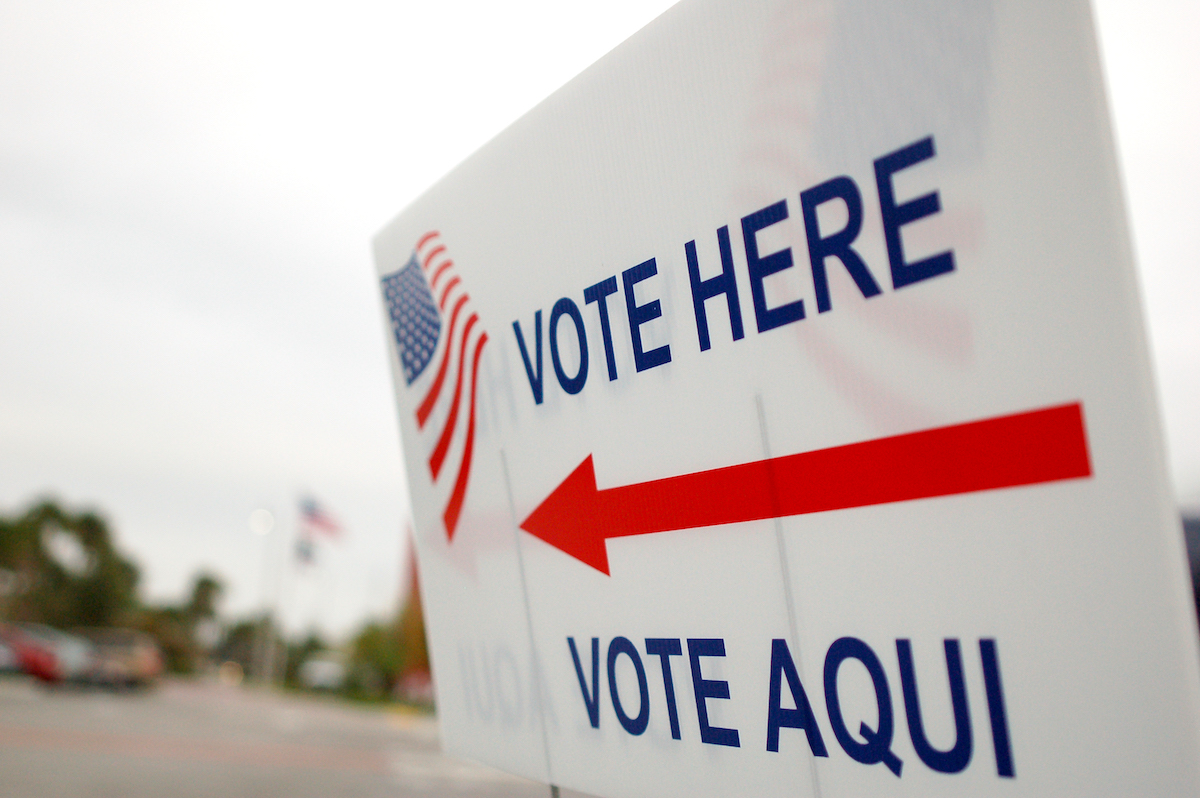This story was first reported by Jesús García of La Opinión.
Nearly 70 million Americans speak a language other than English at home. With election day less than two weeks out, this population — nearly one in four Americans — continues to face significant barriers to voting.
That’s the conclusion of a new report, Language Access and Voting Rights: An Overview of Federal, State and Local Policies, published Oct. 23 by the think tank Dēmos.
“While a patchwork of federal, state, and local laws provides for some language assistance in elections, thousands of voters who prefer a language other than English remain without a real opportunity to cast a ballot,” the study notes.
Latinos and Asian Americans, two of the nation’s fastest growing demographic groups with high rates of Limited English Proficiency (LEP), are among those most impacted, though other groups — including Native Americans and US born Latinos — are also affected, according to the report.
Such barriers also help explain consistently lower turnout rates among these groups, with multiple studies showing a clear link between language assistance and voter participation.
Defining language minorities
“From the literacy tests of the Jim Crow era to the English-only voting materials imposed by states in the modern era, language barriers have a long history of leaving voters, particularly voters of color, without adequate access to the ballots,” study author and Dēmos Senior Researcher Angelo Ancheta told Spanish-language news outlet La Opinión.
In 1975, Congress amended the Voting Rights Act to explicitly prohibit discrimination against “language minority” groups, mandating, among other things, that state and local election officials provide written translations of ballots and election materials.
The move came following Congress’ recognition of the challenge to voting faced by Spanish-speaking Puerto Rican voters who are U.S. citizens.
Under the amended rules, jurisdictions where more than 5% or more than 10,000 voting-age citizens are limited-English proficient, are considered language minorities and are therefore covered under Section 203 of the VRA.
Yet, Ancheta writes, the definition of what constitutes a “language minority” has remained limited, meaning “the vast majority of non-English languages that are spoken in the U.S. are categorically excluded from group-based coverage under the VRA.” That includes languages such as Arabic, Armenian, Farsi, French, Haitian Creole, Polish, Russian, Somali, and Ukrainian, among others.
Moreover, the VRA’s numerical benchmark excludes communities that fall just short of the 10,000 number required under the law.
“One hundred five language minority groups in 30 states had relevant populations of between 7,500 and 9,999 or between 3.9 and 4.99%,” according to the study.
“For example, in Arizona’s Pinal County, Latino LEP voting-age citizens numbered 9,865, which was fewer than 150 citizens short of meeting the 10,000 benchmark, while in Virginia’s Fairfax County, Korean LEP voting-age citizens numbered 9,934, which was fewer than 70 citizens short of meeting the numerical benchmark.”
Filling in the gaps
The study, which examines current federal, state and local laws, notes numerous states and localities across the country have moved to fill in the gaps, providing in-language outreach literature, registration forms and sample ballots in languages not covered by the VRA.
Other efforts include lowering the minimum threshold, thereby expanding the number of voters receiving assistance.
The battleground state of Pennsylvania earlier this month moved to make voting documents available in nine additional languages not covered by the VRA, potentially enfranchising up to 251,701 eligible Pennsylvania voters. Lawmakers in California, home to the largest number of LEP households in the country, are considering a similar bill.
Yet issues remain, including underinvestment as well as poor and even mistranslation leading to ballot errors in some cases, even in regions supportive of greater language access.
There are also jurisdictions where “backlash against the provision of bilingual or multilingual ballots is also not unusual; criticism from many voters and public officials is often vocal and severe, even openly nativist or racist.”
Such attitudes have been enshrined in public policy in a number of jurisdictions where opponents of language assistance argue that English is and should be the dominant language and that any provision of assistance undermines incentives for LEP communities to become more proficient.
An issue of ‘racial equity’
“Language access is an issue of racial equity,” Dēmos Director of Democracy Phi Nguyen told La Opinión. “As they currently stand, federal language access laws often fail to protect voters and leave out thousands of voters of color due to their level of language proficiency.”
Among the study’s recommendations are:
– The creation of electoral materials in languages other than those required by federal law.
– Lowering thresholds for language assistance offered below federal triggers to expand the number of voters receiving assistance.
– The use of clear compliance mechanisms that are based on both sufficiently funded government policies and strong community participation.
Civic organizations and non-profits, meanwhile, have also been active in producing in-language election material, including the website Guides.vote, which offers non-partisan voter information on candidate races both at the state and national level in 12 languages. The group also produces popular social media campaigns like this one that has garnered over 1 million views.
“As we have already seen in many states and localities across the country,” noted Nguyen, “enacting policies to better address the diverse linguistic needs of American voters can address inequities in ballot access and ensure our democracy works for our communities.”




